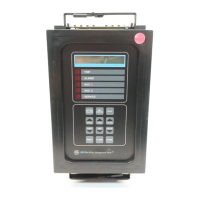2-
12
269Plus Motor Management Relay GE Power Management
CONTROL POWER 2 INSTALLATION
2
2.4 CONTROL POWER
The relay is powered on using any one of two different switching power supplies: HI (90 to 300 V DC / 80 to
265 V AC) or LO (20 to 60 V DC / 20 to 48 V AC). Both versions have been designed to work with either AC or
DC control power. Maximum power consumption for the unit is 20 VA.
The 269Plus will operate properly over a wide range of supply voltages typically found in industrial environ-
ments (see control power in Section 1.5 TECHNICAL SPECIFICATIONS). When the supply voltage drops
below the minimum the output relays will return to their power down states, but all setpoints and statistical data
will remain stored in the relay memory. Motor lock-out time will be adhered to with or without control power
applied. If control power is removed, the relay keeps track of the Motor Lockout time for up to an hour.
Control power must be applied to the 269Plus relay, and the relay programmed, before the motor is energized.
Power is applied at Terminals 41, 42, and 43 which are terminal blocks having #6 screws.
Chassis ground terminal 42 must be connected directly to the dedicated cubicle ground bus
to prevent transients from damaging the 269Plus resulting from changes in ground potential
within the cubicle. Terminal 42 must be grounded for both AC and DC units for this reason.
Verify from the product identification label on the back of the relay that the control voltage matches the
intended application. Connect the control voltage input to a stable source of supply for reliable operation. A
3.15 A, slow blow mini fuse (see Fuse Specifications in Section 1.5 TECHNICAL SPECIFICATIONS) is acces-
sible from the back of the 269Plus by removing the perforated cover. See Figure 2–11: REPLACING A BLOWN
FUSE on page 2–15 for details on replacing the fuse. Using #10 gauge wire or ground braid, connect terminal
42 to a solid ground, typically the copper ground bus in the switchgear. The 269Plus incorporates extensive fil-
tering and transient protection to ensure reliable operation under harsh industrial operating environments.
Transient energy must be conducted back to the source through filter ground. The filter ground is separated
from the safety ground terminal 42 at jumper J201 on the back of the relay to allow dielectric testing of a
switchgear with a 269Plus wired up. Jumper J201 must be removed during dielectric testing. It must be put
back in place once the dielectric testing is done.
When properly installed, the 269Plus meets the interference immunity requirements of IEC 1000-4-3/
EN61000-4-3; EN 61000-4-6 as well as the emission requirements of IEC CISPR11/EN55011 and EN50082-2.
NOTE

